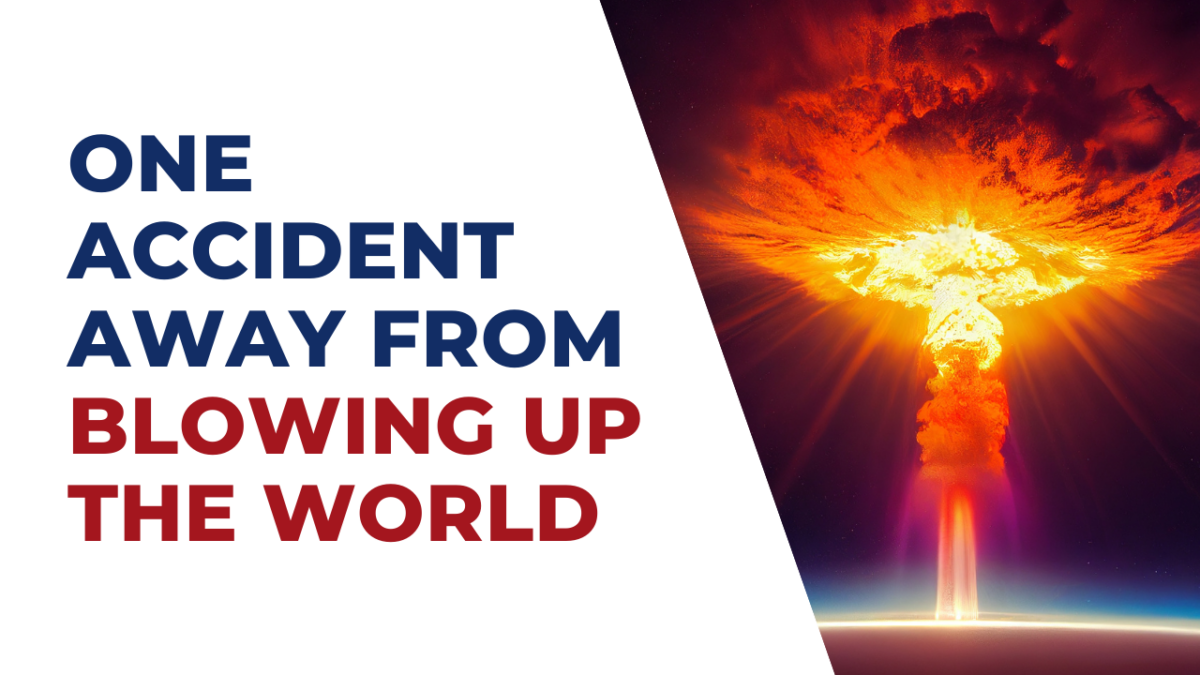One Accident Away from Blowing Up the World
79 years after Hiroshima, over 12,000 nuclear warheads are far more powerful than in 1945. With the Doomsday Clock at 90 seconds to midnight, it’s crucial to address the nuclear threat and reduce arsenals.

Today marks the 79th anniversary of the explosion of the first atomic bomb on the Japanese city of Hiroshima. Three days later, on August 9, 1945, the second bomb was dropped on the city of Nagasaki. The two bombs killed more than 150,000 people and brought World War II to an abrupt conclusion.
While nuclear weapons have not been used in war since then, the development of nuclear weapons has continued. More than 12,000 nuclear warheads now stand ready in the arsenals of nine nations around the globe. What’s more, the average current-generation nuclear warhead is 1,000 times more powerful than the bomb dropped on Hiroshima.
Great organizations deal with their biggest problems by confronting the brutal facts. One brutal fact facing our country—and all nations—is that we are one accident away from blowing up the world.
Since 1947, members of the Bulletin of the Atomic Scientists have used a metaphoric Doomsday Clock to quantify the likelihood of a human-made global catastrophe tied to unchecked scientific and technological developments.
The clock was originally set at 11:53 p.m.–7 minutes to midnight. It has since been set backward 8 times and forward 17 times. In January 2020, the Bulletin of the Atomic Scientists – whose leaders include 13 Nobel Prize recipients – moved the Doomsday Clock from 11:58 to 90 seconds before midnight. This announcement was a warning that identified the most severe global security threat in the Doomsday Clock’s history, greater than that during the 1962 Cuban Missile Crisis or at any time in the Cold War.
In August 2022, UN Secretary General Antonio Guterres stated, “Humanity is just one misunderstanding, one miscalculation away from nuclear annihilation,” and he urged the world to renew a push toward eliminating all such nuclear weapons. “Luck is not a strategy. Nor is it a shield from geopolitical tensions boiling over into nuclear conflict.”
Here are three of the many reasons why nuclear weapons should scare the hell out of you and your family:
- Accidents happen. In 1961, a U.S. Air Force B52 airplane broke up in midair over Goldsboro, North Carolina. It carried two Mark 39 hydrogen bombs, each 260 times more powerful than the Hiroshima bomb. Thankfully, they did not detonate. In 1979, President Carter’s national security adviser Zbigniew Brzezinski was awakened by a phone call in the middle of the night warning of an all-out Soviet nuclear attack, followed immediately by a second call confirming the attack and informing him of the imminent nuclear destruction of the United States. Just seconds before calling the president, Brzezinski received a third call canceling the alarm. It was a mistake, caused by human and technical errors.
- Weapons that are developed end up being used. Hiram Maxim, the inventor of the machine gun, said, “Only a general who was a barbarian would send his men to certain death against the concentrated power of my new gun.”
- Computer systems can cause catastrophic problems. Consider the recent, flawed operating systems update issued by the cybersecurity firm CrowdStrike that unintentionally caused chaos across the globe. Imagine the consequences of a similar programming error on the technology of nuclear weaponry: it could destroy the human race.
Here are two specific steps that the next President of the United States should take to reduce the risk of nuclear Armageddon:
- Reduce the number of deployed U.S. nuclear weapons from 1,744 to around 300. Three hundred bombs are more than enough to protect our country and would dramatically reduce the risk that the United States accidentally causes the next nuclear war.
- Sign U.N. Resolution 62/36 agreeing that the United States will not use nuclear weapons as a first-strike option. Only three nations have voted against this measure: the U.S., the U.K. and France.
We have accomplished some incredible things in our 248 years as a nation. Why not lead the world in creating a nuclear weapons-free world by 2028? Let’s take these two steps and use our power and influence to work with the world’s nuclear powers to dramatically reduce the threat of nuclear war.
As President Kennedy said when he addressed the United Nations in 1961, “Today, every inhabitant of this planet must contemplate the day when this planet may no longer be habitable. Every man, woman, and child live under a nuclear sword of Damocles, hanging by the slenderest of threads, capable of being cut at any moment by accident or miscalculation or by madness. The weapons of war must be abolished before they abolish us.”
We have less than 100 days left before Election Day. It’s 90 seconds to midnight. American citizens should demand to know what each candidate plans to do with America’s vast nuclear arsenal.
To download your free copy of A Bold Plan for America: https://aboldplan.com/book/
See A Bold Plan for America for citations: https://aboldplan.com/download/ABoldPlanforAmerica.pdf